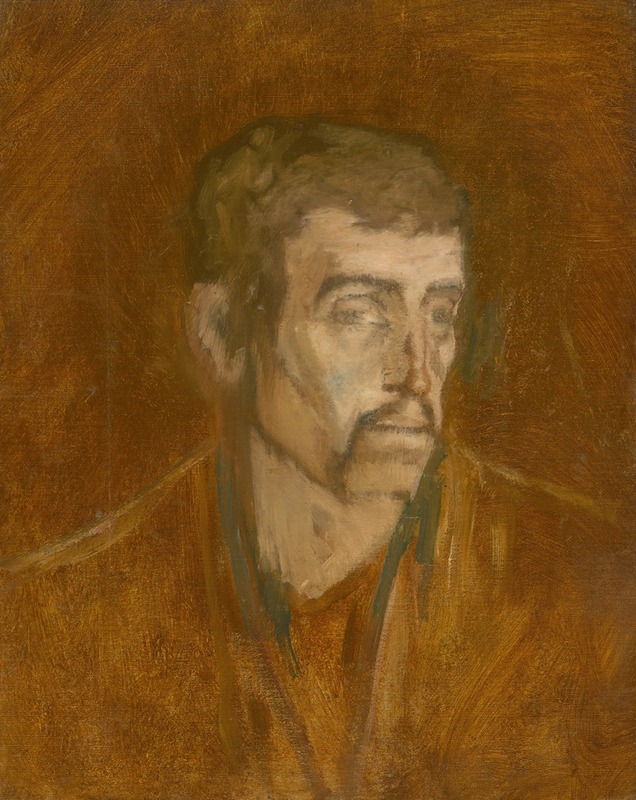
Study of Unhappy Man
A hand-painted replica of Ladislav Mednyánszky’s masterpiece Study of Unhappy Man, meticulously crafted by professional artists to capture the true essence of the original. Each piece is created with museum-quality canvas and rare mineral pigments, carefully painted by experienced artists with delicate brushstrokes and rich, layered colors to perfectly recreate the texture of the original artwork. Unlike machine-printed reproductions, this hand-painted version brings the painting to life, infused with the artist’s emotions and skill in every stroke. Whether for personal collection or home decoration, it instantly elevates the artistic atmosphere of any space.
Ladislav Mednyánszky, a prominent Hungarian painter, created "Study of Unhappy Man" in the late 19th or early 20th century. Mednyánszky, born on April 23, 1852, in Beckov, Kingdom of Hungary, was known for his expressive and often melancholic works that explored the depths of human emotion and the human condition. His oeuvre includes landscapes, portraits, and genre scenes, with a particular focus on the marginalized and downtrodden members of society.
"Study of Unhappy Man" is a poignant example of Mednyánszky's ability to capture the essence of human suffering and introspection. The painting depicts a solitary male figure, whose expression and posture convey a deep sense of sorrow and despair. Mednyánszky's use of muted colors and dramatic lighting enhances the emotional impact of the piece, drawing the viewer into the subject's inner turmoil.
Mednyánszky's technique in this study is characterized by loose, yet deliberate brushwork, which adds to the raw and unrefined quality of the painting. This approach allows the viewer to focus on the emotional state of the subject rather than on fine details. The background is typically subdued, ensuring that the viewer's attention remains on the figure's face and body language.
Throughout his career, Mednyánszky was deeply influenced by his personal experiences and the socio-political context of his time. He was born into an aristocratic family but chose to live a life that was often at odds with his privileged background. He traveled extensively across Europe, and his encounters with various social classes and the harsh realities of life are reflected in his work. His empathy for the less fortunate is evident in many of his paintings, including "Study of Unhappy Man."
Mednyánszky's works are often associated with Symbolism and Realism, movements that sought to depict the deeper truths of human existence. His ability to convey complex emotions through his art has earned him a significant place in Hungarian and European art history. "Study of Unhappy Man" is a testament to his skill in portraying the psychological depth of his subjects.
The painting is housed in the Slovak National Gallery in Bratislava, Slovakia, which holds an extensive collection of Mednyánszky's works. The gallery's collection provides valuable insight into the artist's development and the recurring themes in his art. "Study of Unhappy Man" remains a powerful example of Mednyánszky's commitment to exploring the human psyche and his compassion for those who suffer.
Ladislav Mednyánszky passed away on April 17, 1919, in Vienna, Austria. His legacy continues to be celebrated, and his works are studied for their emotional intensity and technical mastery. "Study of Unhappy Man" is a significant piece within his body of work, exemplifying his unique ability to capture the essence of human sorrow and resilience.


















